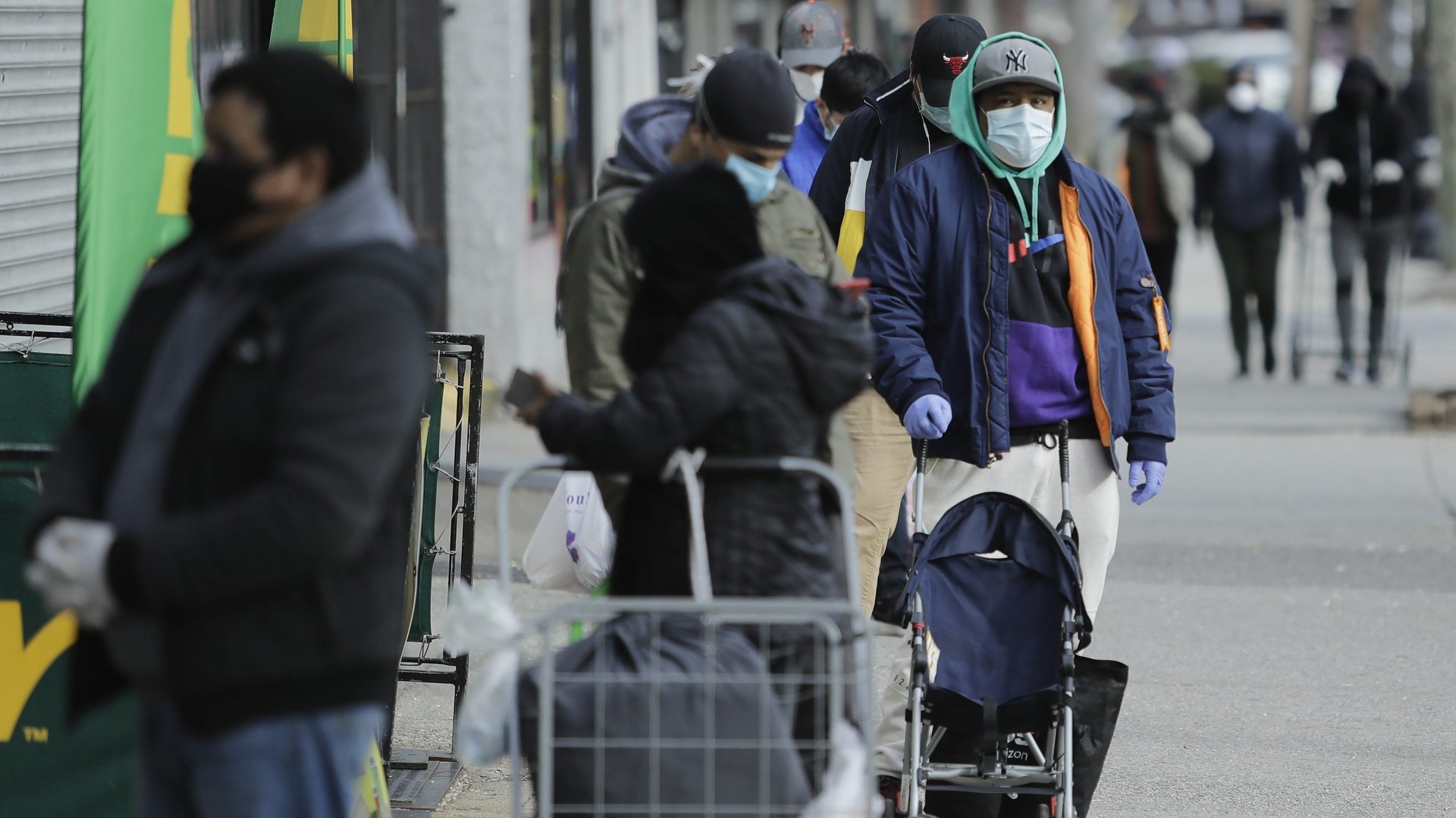Three charts showing how US immigrants are affected by the coronavirus pandemic
Twenty-four percent of maids and housekeeping cleaners working in the US are not citizens of the country. So are 8% of physicians. The former have been told to stay home to limit the spread of coronavirus. The latter are forced to treat patients during a shortage of the protective supplies they rely on. They’re not the only ones.


Twenty-four percent of maids and housekeeping cleaners working in the US are not citizens of the country. So are 8% of physicians. The former have been told to stay home to limit the spread of coronavirus. The latter are forced to treat patients during a shortage of the protective supplies they rely on. They’re not the only ones.
Non-citizen immigrants in the US make up 6.8% of the workforce. They work in jobs that were deemed essential fighting the virus, and in industries that have seen the large layoffs and slowdowns in recent weeks.
Accommodation and food services, health care and social assistance, administrative and waste services, and retail trade are the industries that experienced the biggest layoffs in March, according to the latest employment data.
Three in four non-citizen immigrants work in industries that lost jobs in March. That’s the same share of citizen workers. Monthly employment figures exclude farm workers from their totals. Non-citizens are more than twice as likely to work as farm labor as citizens, according to the Census.
Our analysis is based on preliminary employment figures from the Bureau of Labor Statistics and immigration figures from the Census Bureau’s American Community Survey. Industries that are included in the BLS’s preliminary figures and can be compared to the Census data currently employ 29% of the workforce.
The chart below shows the biggest industries in the US and the share of their workforce made up by immigrants. Unlike the charts above, it includes figures that cover the entire workforce. The industries that experienced the largest layoffs are highlighted.
Which industries need immigrants the most?
What makes a non-citizen immigrant more vulnerable during the crisis than a citizen worker, is a combination of lower income and a lack of social benefits.
- Non-citizen immigrants make 39% less than US workers, on average.
- About 93% of US workers have health insurance coverage, but only 70% of non-citizen workers do.
- Many of them are ineligible for the cash payments from the recently-passed $2 trillion relief effort. The payments are only given to residents in middle- and low-income households with a social security number who have been in the US for a substantial amount of time.
- Similarly, when temporary workers and unauthorized immigrants get laid off they are generally excluded from receiving unemployment benefits.
A high proportion of the US’s farm laborers are seasonal workers coming to the country temporarily. About 42% of them do not have health insurance. Only 13% of citizen workers in the same industry don’t have coverage. Food-producing farms are essential businesses, but many haven’t taken precautions against the virus. Getting sick puts workers in life-threatening situations. With an average monthly income of $1,190, it could be difficult for them to afford medical care. They could also be unable to return home for treatment. Many countries have restricted who can cross their borders due to the pandemic.